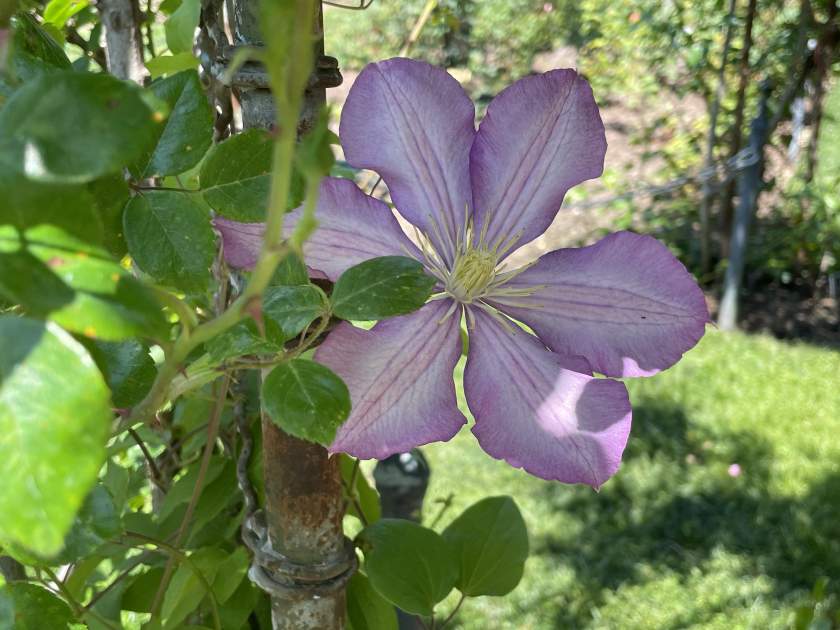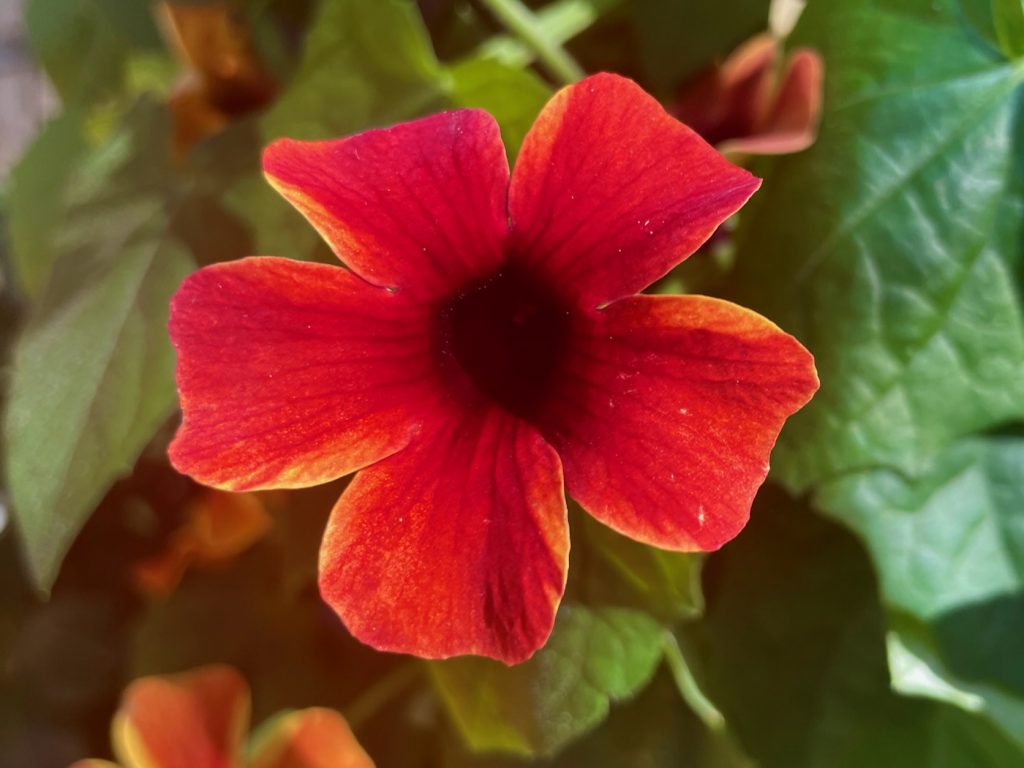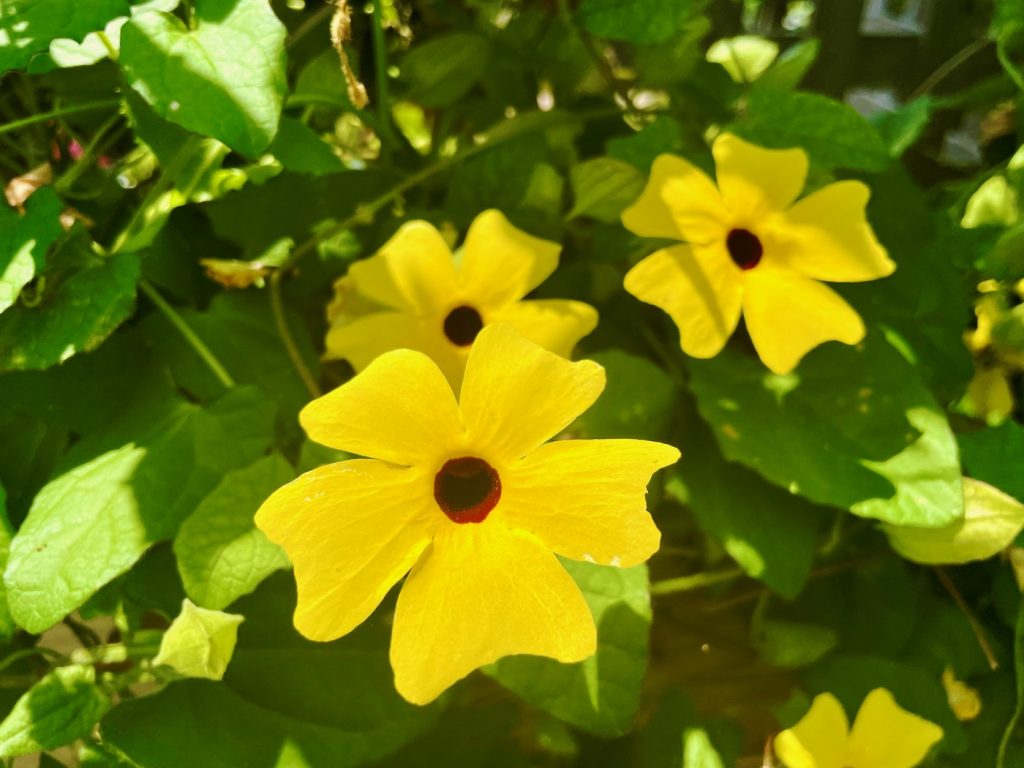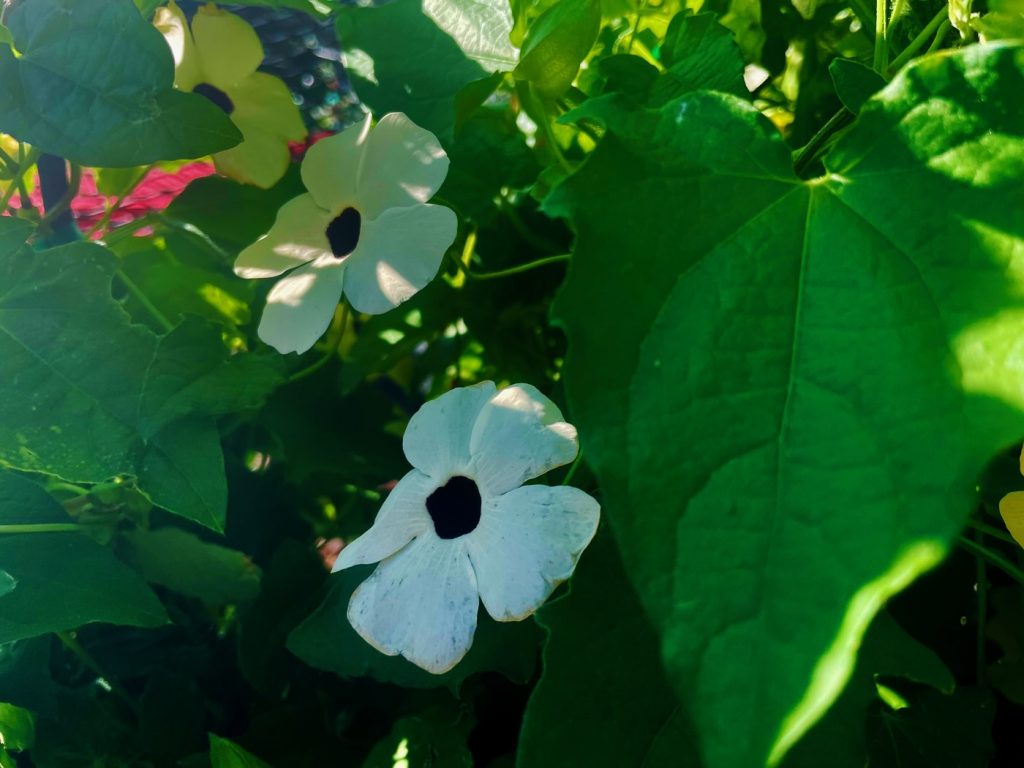Discover the Beauty of Clematis ‘Nikolai Rubtsov’: A Stunning Mauve-Red Late-Blooming Clematis
Clematis ‘Nikolai Rubtsov’ is a remarkable late-flowering clematis variety renowned for its large mauve-red flowers adorned with a paler stripe and yellow anthers. Bred in 1967 by M.A. Beskaravainaja and A.N. Volosenko-Valenis at the State Nikitsky Botanic Gardens in Crimea, Ukraine, this exceptional hybrid is a testament to their expertise. Named after the esteemed Soviet botanist Professor N I Rubtsov, this clematis combines the best traits of its parentage—’Jackmanii‘ and ‘Nelly Moser‘.
Clematis ‘Nikolai Rubtsov’ belongs to the Ranunculaceae family, also known as the Buttercup family. The Ranunculaceae family is a diverse group of flowering plants that includes numerous ornamental and medicinal species.
Background and Family Origin:
Clematis ‘Nikolai Rubtsov’ is a product of the expertise and dedication of M.A. Beskaravainaja and A.N. Volosenko-Valenis, who developed this hybrid at the State Nikitsky Botanic Gardens in Crimea, Ukraine. The clematis is named in honor of Professor N I Rubtsov, a renowned Soviet botanist who made significant contributions to the field. With its lineage traced back to the ‘Jackmanii‘ and ‘Nelly Moser‘ varieties, Clematis ‘Nikolai Rubtsov’ carries the legacy of these esteemed predecessors.
Characteristics: Clematis ‘Nikolai Rubtsov’ boasts several distinctive characteristics that set it apart as a captivating garden specimen. The flowers, measuring approximately 6-8 inches in diameter, feature a striking mauve-red color with a paler stripe that adds depth and allure. The contrasting yellow anthers provide a vibrant pop of color within the blooms. The tepals, numbering 5-6, are obovate to rhombic in shape, with wavy margins, and measure around 5-6cm long and 3.5cm wide.
This late large-flowered clematis showcases an extended flowering period, gracing the garden with its beauty from July through September. With its vigorous growth habit, Clematis ‘Nikolai Rubtsov’ can reach an approximate height of 6 to 8 feet, making it an eye-catching addition to trellises, arbors, and fences.
Cultivation of Clematis ‘Nikolai Rubtsov’:
Sunlight: Tolerates Partial Shade, Prefers Full Sun Clematis ‘Nikolai Rubtsov’ is adaptable to various light conditions but thrives when planted in full sun. It can tolerate partial shade, but providing ample sunlight will enhance its growth, blooming, and overall vigor.
Watering: Regular Watering, Especially in the First Year To ensure the optimal development of Clematis ‘Nikolai Rubtsov,’ regular watering is essential, particularly during the first year after planting. Keep the soil evenly moist but avoid waterlogging, as excessive moisture can lead to root rot. During hot and dry periods, monitor the soil moisture levels and adjust the watering frequency accordingly.
Soil: Well-Drained Soil for Healthy Growth Clematis ‘Nikolai Rubtsov’ thrives in well-drained soil that retains some moisture without becoming waterlogged. It adapts well to various soil types, but adding organic matter, such as compost or well-rotted manure, during planting can improve soil fertility and drainage. Aim for a neutral to slightly alkaline pH range for optimal growth.
Pest and Disease Management: Vigilance and Timely Treatments While Clematis ‘Nikolai Rubtsov’ is relatively pest and disease resistant, it may still be susceptible to common issues. Regularly inspect the plant for pests like aphids and promptly take appropriate measures if an infestation occurs. Powdery mildew and clematis wilt are potential diseases that can affect this clematis variety. If detected, treat them with suitable fungicides according to the recommended guidelines.
Pruning: Group 3 – Hard Pruning Recommended in Early Spring As a Group 3 clematis, Clematis ‘Nikolai Rubtsov’ benefits from hard pruning in early spring. Cut back the previous year’s growth to a pair of healthy buds, approximately 12-18 inches above the ground. This pruning technique stimulates new growth and encourages abundant flowering throughout the season.
Propagation:
To propagate Clematis ‘Nikolai Rubtsov,’ softwood cuttings are commonly used during spring or early summer. Select a 4-6 inch section of stem from the current season’s growth, ensuring it is healthy and free from diseases or pests. Remove the lower leaves from the cutting and dip the cut end into a rooting hormone. Plant the cutting in a pot filled with moist potting mix, placing it in a warm and well-lit location. Maintain adequate moisture levels in the potting mix without allowing it to become overly saturated. After 4-6 weeks, the cutting should develop roots. At this stage, it can be transplanted into a larger pot or directly into the garden.
Clematis ‘Nikolai Rubtsov’ is a captivating clematis variety that captivates with its large mauve-red flowers and paler stripe, complemented by yellow anthers. Bred by M.A. Beskaravainaja and A.N. Volosenko-Valenis at the State Nikitsky Botanic Gardens, this hybrid is a testament to their skill and passion. With its vigorous growth, extended blooming period, and adaptability to various light and soil conditions, Clematis ‘Nikolai Rubtsov’ is an excellent choice for adding vertical interest and color to your garden.
By following the suggested cultivation practices, including regular pruning and diligent pest and disease management, you can enjoy the beauty of this exceptional clematis for years to come. Additionally, with the knowledge of propagation techniques, you can expand your collection and share the charm of Clematis ‘Nikolai Rubtsov’ with other gardening enthusiasts.




